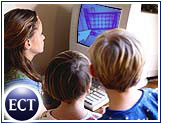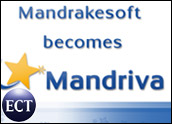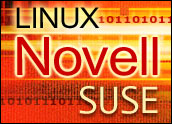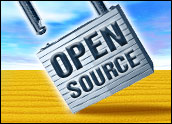
Computers are becoming pervasive learning tools in K-12 education, whether in individual classrooms or in a shared media center.
Both Apple and Microsoft have donated millions of dollars worth of equipment to schools in order to aid education and spread their doctrine. But what about the growing influence of Linux? Are students exposed to the open-source operating system as well?
Linux would seem to have great benefits over either Apple or Microsoft in that its license is free, as is much of the software that sits on it. But if schools are receiving donated equipment, they are unlikely to care whether it runs on OSX, Windows XP or Red Hat Linux.
Functionality Paramount
In fact, for the most part, what educators care about in K-12 education is not the guts of the computer or its foundation, but the software they will use as a tool to teach their students.
“If you think, ‘What operating system does my cell phone run on’ you’re going to say, ‘I don’t care,'” Efrain Rovira, Hewlett-Packard worldwide director of marketing for Linux, told LinuxInsider. “In K-12 it’s more about whether the tool works or not. Linux today is not as pervasive, because the functionality is not there yet. Microsoft and Apple have much more robust solutions and tools.”
That appears to be changing. A Quality Education Data report released in September found that 19 percent of schools surveyed were at least beginning to experiment with Linux on their servers. That’s not many compared to Windows-based systems’ presence in 86 percent of schools and the availability of Apple’s OS9 and OSX in 34 percent, but it does show that Linux is gaining ground.
United Effort
Resources are now available for school administrators and teachers to help them break into the open-source community, such as The Linux Terminal Server Project. The organization offers step-by-step directions for educators interested in building a Linux box, installing and using the K12LTSP distribution of Linux.
SchoolForge brings together groups from around the world that are working to bring open source to the classroom. Its almost 200 member organizations include schools systems and software developers such as KDE-Edu, a project of KDE (K Desktop Environment). KDE’s software engineers work to create educational software for ages 3-18 and programs for teachers to aid lesson planning — all for Linux and Unix operating systems.
Even with these advances, Anne-Marie Mahfouf, who focuses on education software within KDE, told LinuxInsider that it’s not an easy road, particularly when it comes to software.
“The KDE-Edu project is quite young and we need more developers,” she said. “Programmers are usually quite young and have no children and are not attracted to developing educational software.”
Software Challenges
There are several programs already available from KDE-Edu: KStars, a planetarium with telescope Support; KTouch, a typing trainer; and KiG, a geometry program. KTurtle, a LOGO programming language interpreter is in the works as are some small languages and math programs. Still, Mahfouf said, “There is not enough educational software available.”
Meanwhile, many of the hundreds of open-source educational programs that do exist are untested in classes, perform one niche function or have become obsolete.
The SchoolForge site lists more than 70 case studies — just over half from outside the United States — of schools that have installed Linux servers and/or are using Linux in classes.
Computer science teachers at Yorktown High School in Arlington, Va., were pleased with their open-source project, but echoed Mahfouf’s assertion that Linux is lacking, though moving in the right direction.
“Linux is only now beginning to be ready for use in a general purpose lab. At the rate things like OpenOffice and Gnome and KDE are progressing, it will be fully ready for the general purpose lab within a year,” teacher and project coordinator Jeff Elkner wrote in an assessment of his school’s experience.
Benefits for High Schoolers
While software may be the main focus of most educators, advanced computer science students at the high-school level could have a great advantage by working with Linux.
“As a platform for teaching computer science, [Linux] is without equal,” Elkner wrote. “Compilers/interpreters are available for almost any language you can think of, and they are both high quality AND open source!”
Linux also offers the same advantage to high school computer science students as it does to university students who have helped make it so popular: The code is available and can be tinkered with and experimented on at will. Programmers also have the luxury of being able to do the same with any open-source software.
Despite Linux’s advantages, the number of schools using the system in the U.S. remains very small. “Part of the problem is that usually governments control schools and have contracts with Microsoft,” said Mahfouf.
Developing nations may be more likely to use Linux because it requires fewer resources. Although it is difficult to track figures because distributions are open source, Mahfouf said she has heard that as many as 250 schools in Namibia run their computers on Linux.
Linux, of course, is attractive when budgets are tight, and Rovira said he believes more systems both in the U.S. and worldwide will turn to it eventually.
“As budgets get cut across the board, educators have to find ways to teach with relevant tools,” he said.
If the software follows, “Linux provides great value proposition,” said Rovira.





















































I’ve used Linux in public schools classrooms since around 1993. I’ve enjoyed working with Linux, but there is huge resistance to using Linux within the educational community in general. This has been extremely frustrating for me, but it’s something I’ve learned to cope with… mostly.